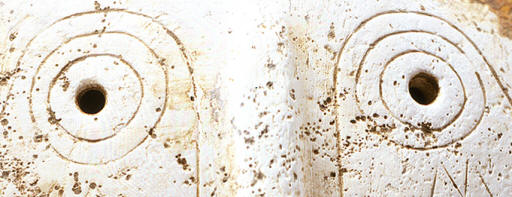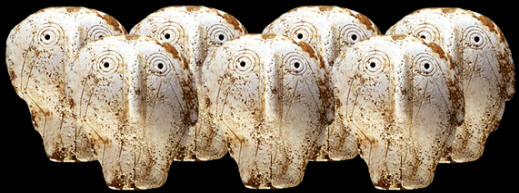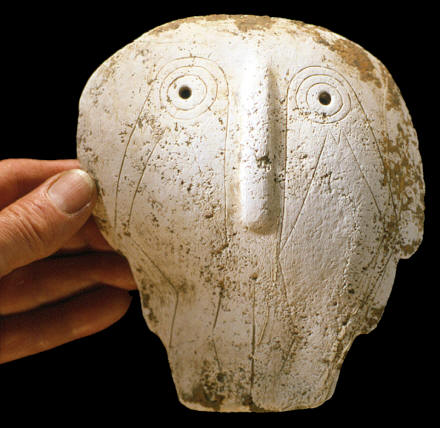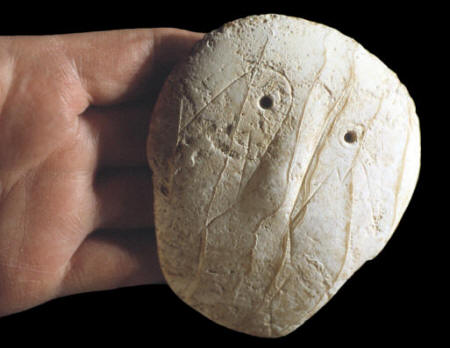|
||
|
||
|
"Although there has been some question about
whether these shells (masks) were gorgets---that is, artifacts suspended
on the breast---enough have been found in that position with burials to
confirm such usage as the primary, if not only, function,"---------1996,
Jeffrey P. Brain & Philip Phillips, "Shell Gorgets," p. 72.
Various names have been used to describe these ghostly images, such as shell facemasks, shell masks, marine shell mask gorgets, shell mask gorgets and gorgets. They were made during the Mississippian period and they relate to a basic human form from which several different styles are represented. |
||
|
Shell mask gorgets have been found over a wide area. They are more commonly known in the southeastern United States. Arkansas and Tennessee seem to have produced more of them. They have been found as far north as Manitoba in Canada and as far west as Montana and South Dakota. They have also been reported from North Dakota, Kentucky, Ohio, Illinois, Iowa, West Virginia, Alabama and Georgia. |
||
|
Shell mask gorgets appear late in the Mississippian period. They were still in use well after the arrival of the Spanish. An example from North Dakota was engraved with a design of a horse and another example was reported in a Siouan Kansa ceremonial bundle as late as 1857. |
||
| CONTINUE ON TO PAGE TWO | ||
|
"REFERENCES"
1912, Frederick Webb Hodge, "Handbook of American Indians North of Mexico,"
p. 814. |
||




